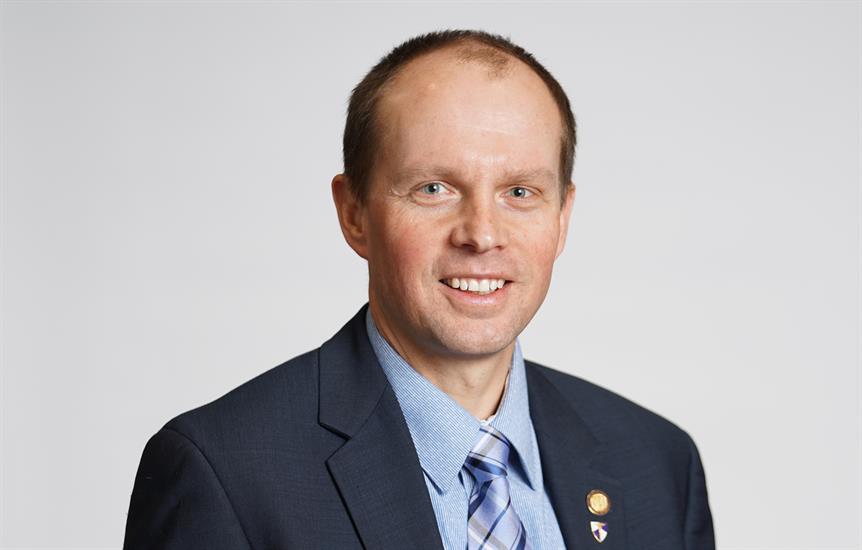An ABFAS Board Certification: A Conversation with Dr. Andrew J. Meyr

June 3, 2022
By Jeneen Elagha, TUSPM Class of 2024, in conversation with Andrew J. Meyr, DPM, D.ABFAS, FACFAS
As podiatric medical students, it is easy to narrow our focus to the immediate next steps: our next exam, next clinical rotation, next residency interview. We often find ourselves preparing to jump the immediate upcoming hurdle, and thus may lose focus on the illustrious careers and fulfilling achievements that lay in wait ahead. One of those major achievements, of course, is Board Certification through the American Board of Foot and Ankle Surgery (ABFAS) following residency. In a conversation with Andrew J. Meyr, DPM, D.ABFAS, FACFAS, professor of surgery and residency director at Temple University School of Podiatric Medicine and Temple Hospital, we delve into the meaning and significance of ABFAS Board Certification, as well as how this certification is intertwined with the definition of success for podiatric surgeons.
Knowledge and Leadership
Dr. Andrew J. Meyr completed his residency at Inova Fairfax Hospital in Northern Virginia, and has since joined the academic and surgical staff at Temple University School of Podiatric Medicine (TUSPM). He is also the program director of Temple Hospital’s Limb Salvage Center, and the curator of the Shoe Museum located on TUSPM’s campus. When asked what led him into podiatric surgery, Dr. Meyr recounted his high school experience, during which he “used to joke around about being a foot doctor, and it just kind of stuck.” He credits his interest in academia to a family influence, as he comes from a family of many educators, as well as his involvement in TUSPM’s honor society, Stirling-Hartford-Diprimio. As a Board Certified foot and ankle surgeon, Dr. Meyr views ABFAS Board Certification as a measure of competency in surgery. He explained that a surgeon who achieves ABFAS Board Certification “communicates that they are a ‘for real’ foot and ankle surgeon,” and that this achievement “demonstrates that I have that knowledge and can be a leader in foot and ankle surgery.”
I asked Dr. Meyr about his own path toward achieving ABFAS Board Certification, and he was proud to explain that he sat for boards three years after completing his residency, which was “relatively fast in reference to other people that [he] graduated with.” Although ABFAS allows up to seven years between residency graduation and ABFAS Board Certification, Dr. Meyr credits his choice of residency for this expedited process: by choosing a residency that offered a high volume of surgical cases and preparing for the board exams in advance by reading “the rules and regulations and requirements” early on in practice. He stressed that it is paramount to obtain all the proper documentation, radiographic images, progress and operative notes, and of course required surgical cases to achieve ABFAS Board Certification. Following this, the preparation for the exam itself becomes a task of organization and understanding. Through vigilance and dedicated effort, Dr. Meyr explains that ABFAS Board Certification after residency is “not much different than going back to school” in terms of preparing for the National Board of Podiatric Medical Examiners’ certifications.
An Appreciation of the Process
Of course, as students, much of the ABFAS process feels very removed from our day-to-day focus. Dr. Meyr addressed this as well, acknowledging that while ABFAS Board Certification is not in our immediate future, it demands “an appreciation of the process” and achieving the “last universal goal for people that are in our profession.” Although the field of podiatry is unique in that it allows practicing surgeons to explore countless avenues of specialization, Dr. Meyr noted that achieving ABFAS Board Certification is the ultimate litmus test for the capability and competency of foot and ankle surgeons. This achievement is, as he noted, time-consuming and intensive, but is a universal acknowledgement of podiatric surgeons’ years of hard work, careful patient care, and excellence in our craft.As our conversation wound down, I sought Dr. Meyr’s advice on bridging our didactic education with patient care. In terms of the interpersonal aspect of podiatric medicine, he acknowledged that it is a skill, much like suturing and other surgical competencies, that requires dedication and constant practice. When asked what he would stress to students as we progress through our education and into our practice, he offered this advice: “There’s always something extra that you could be doing for patients. There’s always something that you could be doing more than you’re doing right now.”
Rendering a Service
Finally, as I asked Dr. Meyr to describe his most interesting or favorite surgical procedure, he instead provided valuable insight on his approach to patient care; he referenced a quote by Dumas' The Count of Monte Cristo character Luigi Vampa, who stated “I render a service, I do not sell it.” Essentially, he feels that preventative medicine should still be at the forefront of the minds of surgeons, despite his own high achievement in the field of foot and ankle surgery. “Sometimes I think the best surgery is the one that you don’t necessarily have to do. I feel it’s something important that I can offer...but not something that I try and ‘sell.’”Many thanks to Dr. Andrew Meyr for his time and insight in service of this article.
This interview appears in the Footnotes publication of the American Podiatric Medical Students' Association. ABFAS extends thanks to APMSA for the opportunity to share the interview here.
